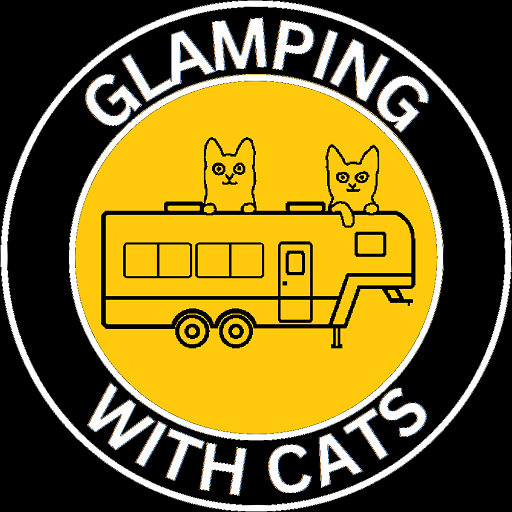Wind Cave National Monument, SD, July 2025
It was closer to 500 feet. Actually, we have no idea on the length of a league. If a league is .025 feet, maybe it was 20,000 leagues. Probably not.
We pre-purchased tickets for cave tours at Wind Cave National Monument. Originally, we planned for one at Wind Cave and one at Jewel Cave. From reading, it seemed like Jewel Cave was less good than Wind Cave, so we went for two Wind Cave tours. The tours were several hours apart, so we planned to visit the store and display areas between tours. John planned on talking the 15 year old camera into the cave, in case there was too much moisture.
The first tour was the Natural Entrance tour. On this tour, you get a little more of the history of the cave. If we understood correctly, we do not actually enter the natural entrance; the actual natural entrance is too small for adults to enter. Instead, there is a small building built into the side of the hill near the natural entrance. The building serves as an airlock to keep the air pressure in the cavern stable. It is called the Wind Cave because the natural entrance “breathes”. When the barometric pressure is high, the higher pressure air gets trapped in the cavern. When the air pressure drops outside the cavern, cool air can be expelled from the entrance at up to 50 mph. It is an all natural air conditioner.
At the waiting pavilion, it looked like they had a wild plum tree. We would have tasted a plum, if they were ripe. John also noticed a little bird poop bullseye in front of the waiting shelter. Looking up, there was a bird nest with two little beaks sticking out. No one was active, so we left them alone.


While we stoop around the natural entrance, the guide told us the Native American history of the cave. Due to the breathing of the wind cave, the Native Americans consider it a sacred site. There are often prayer bags tied to trees at the site. The cave is part of the genesis story of the Lakota Indian Tribe. They believe that the natural entrance is where the Bison and the Lakota people were “birthed” into the world.
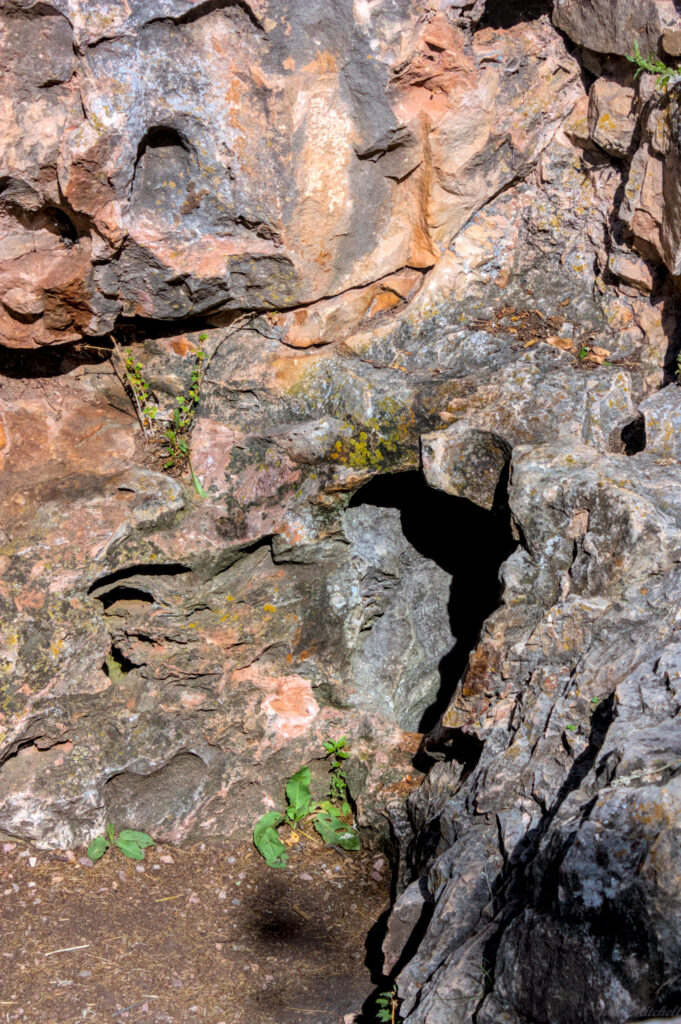
Inside the cave, John learned that the flash did not always make the view better. Due to the very low light levels in the cave, the ISO has to be set high and the shutter speed very low. The consequence is that the pictures are blurrier with more graininess. It is hard to hold a camera perfectly still for 1 second. The flash often washes out the shadows that make the view interesting. Since the other tourists do not like being blinded in a cave, you can not get good vista pictures. Most of the pictures are smaller formation shots.
First, an explanation of some of the formations. The first one is Boxwork. This formed before the cave existed. The process worked something like this. An inland lake or sea deposited limestone shells of sea creatures that is compacted into limestone. Calcite mineralizes the cracks in the limestone to form a hard web structure inside the limestone. After the cave forms, the limestone is chemically weathered away by acidic water. This leaves the web of harder rock called Boxwork. This is an example of Boxwork:
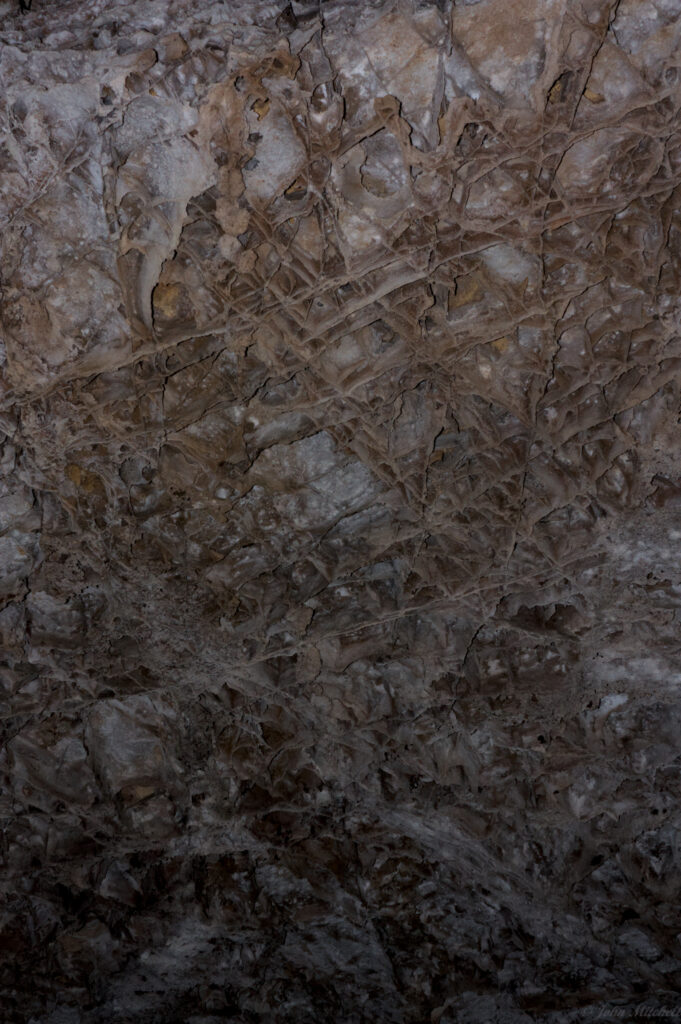
Cave Popcorn forms when water absorbs carbon dioxide to become slightly acidic, dissolves limestone, and the water is exposed to air. The carbon dioxide leaves the water, and the limestone is deposited in little nodules. The water can, drip, splash, or just evaporate for this process. This is an example of Cave Popcorn.
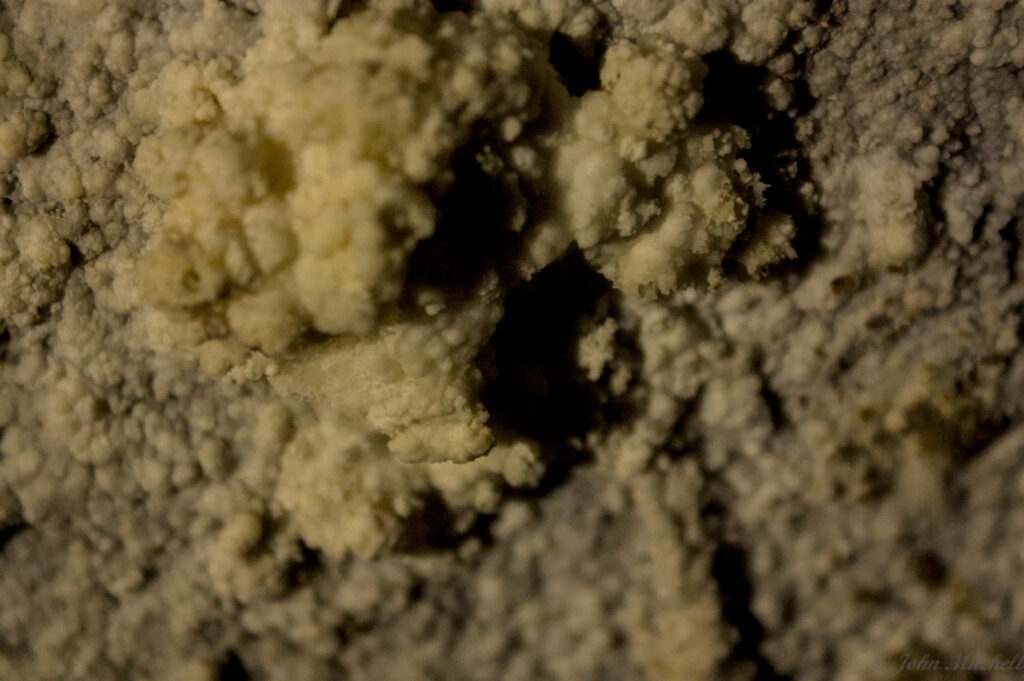
There is also supposed to be Frostwork in the cave. I am not sure whether it was not on our tours or we missed seeing it. This forms when there is circulating air and mineral rich water. The minerals deposit in long whisker like crystals, like frost crystals.
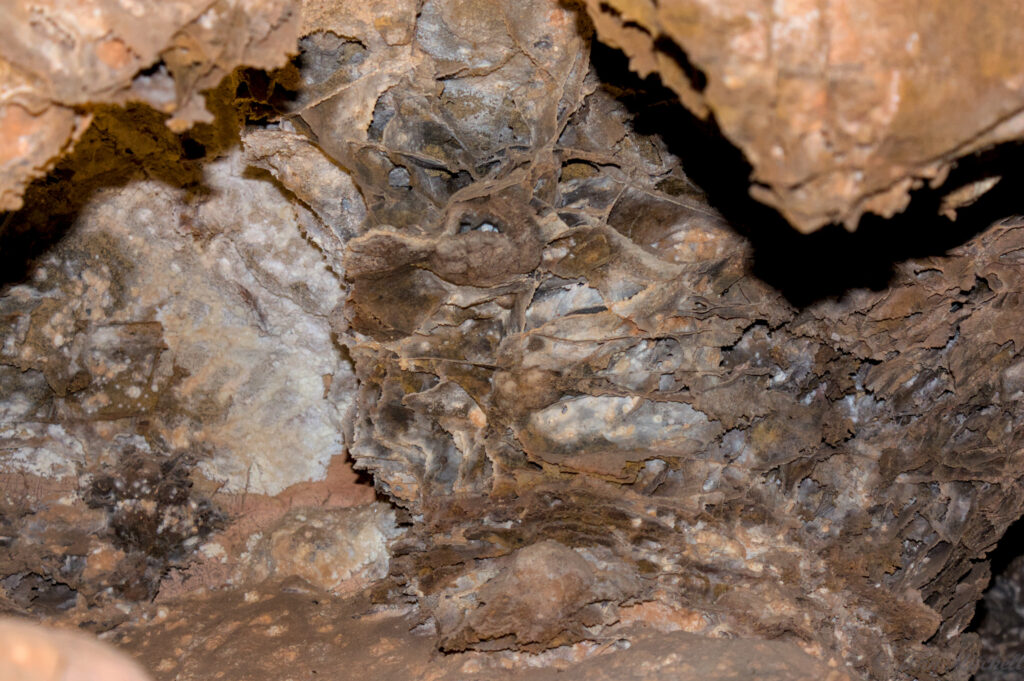
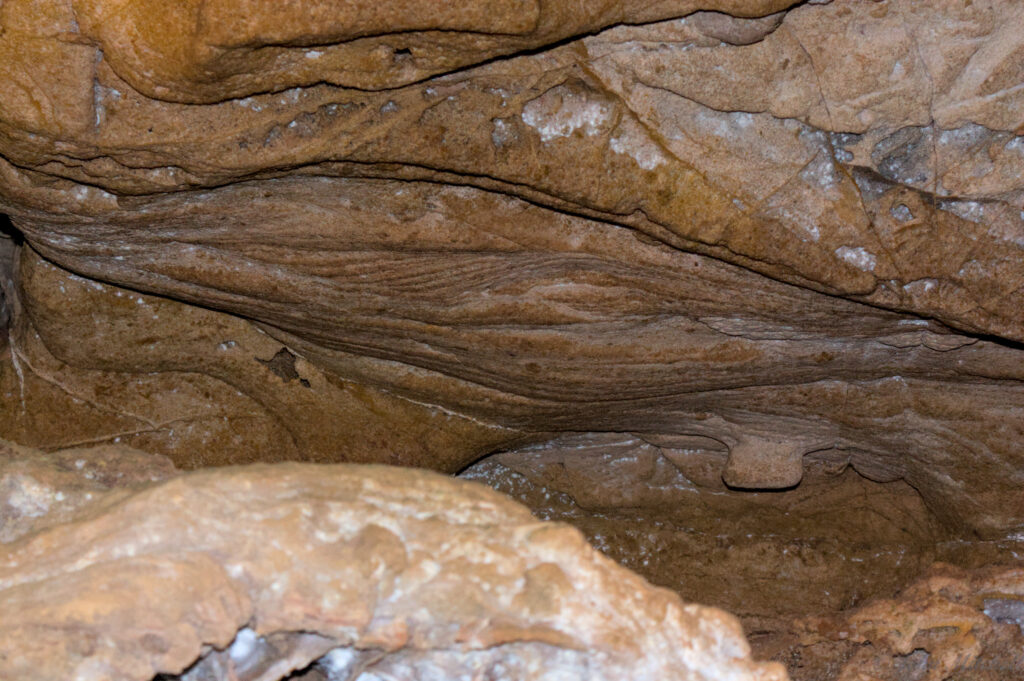
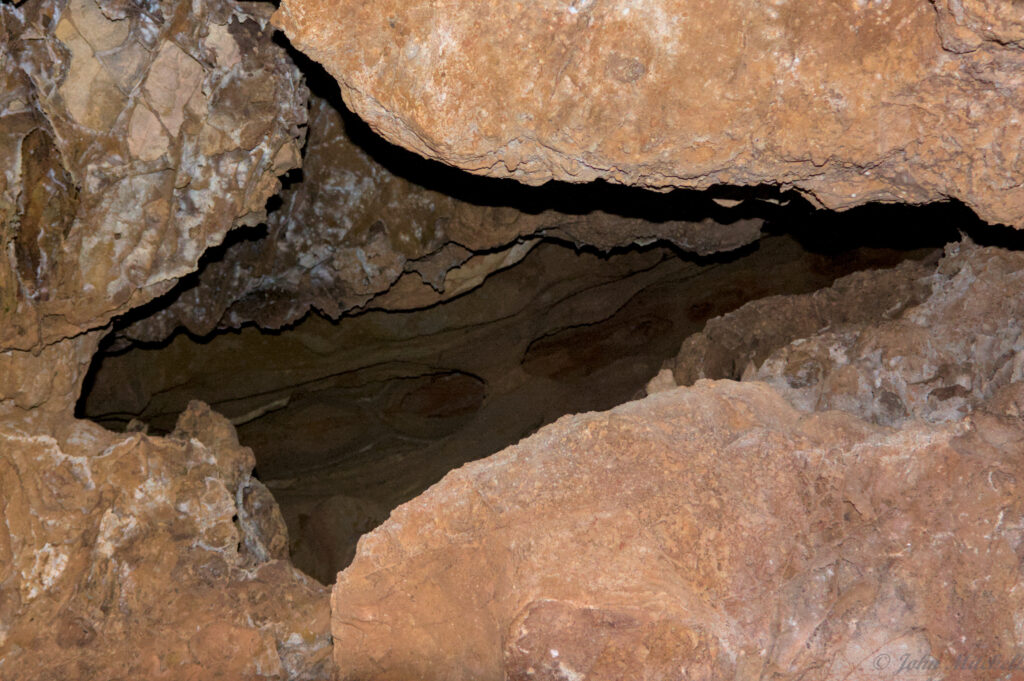
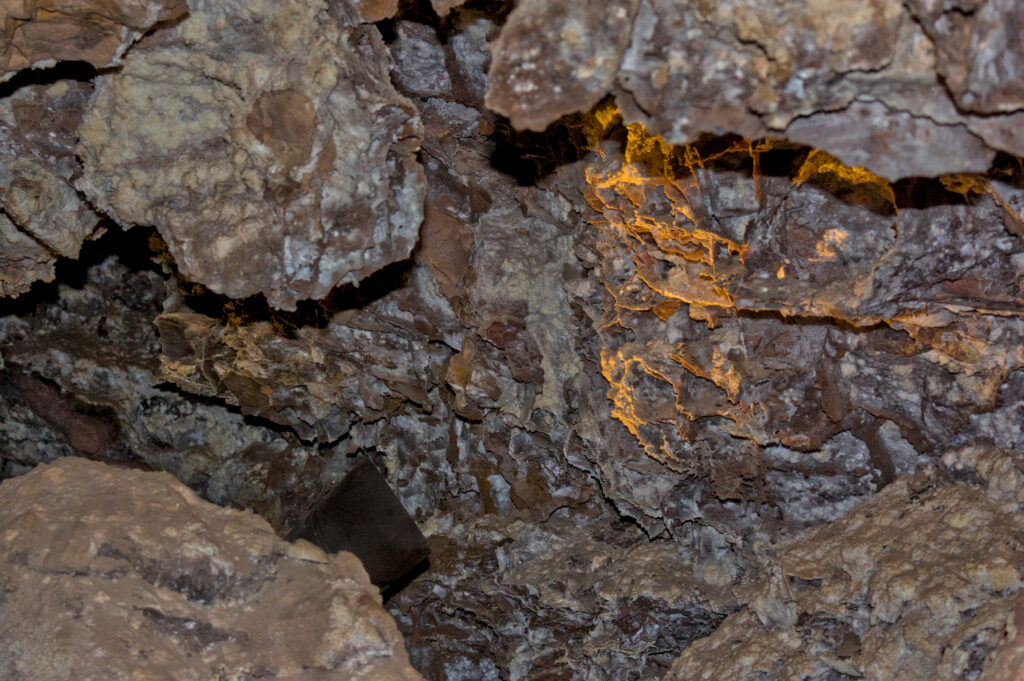
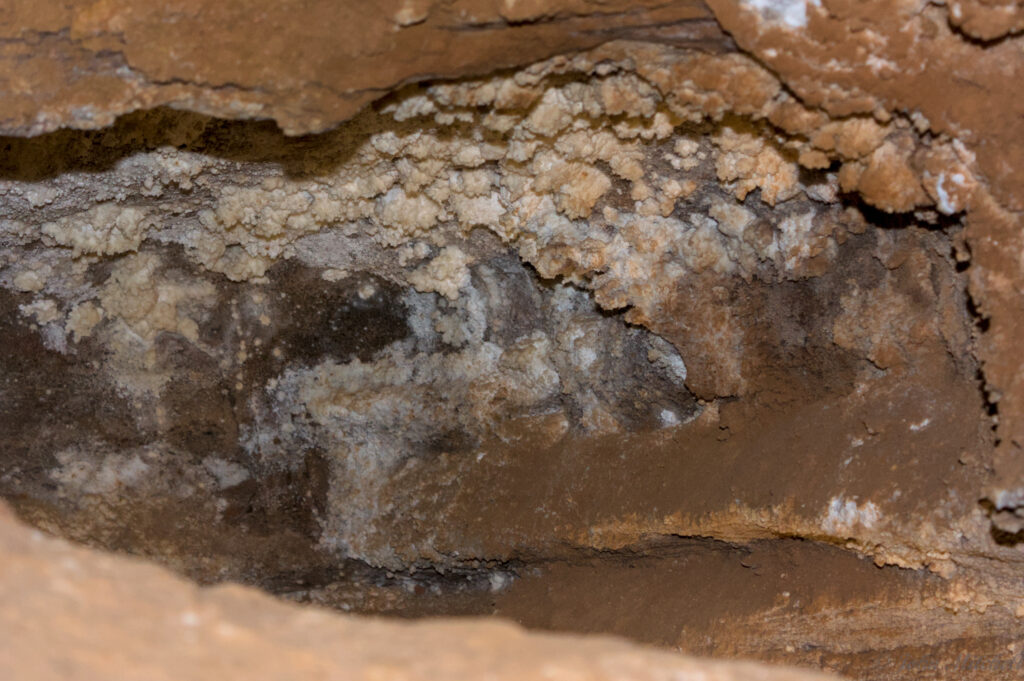
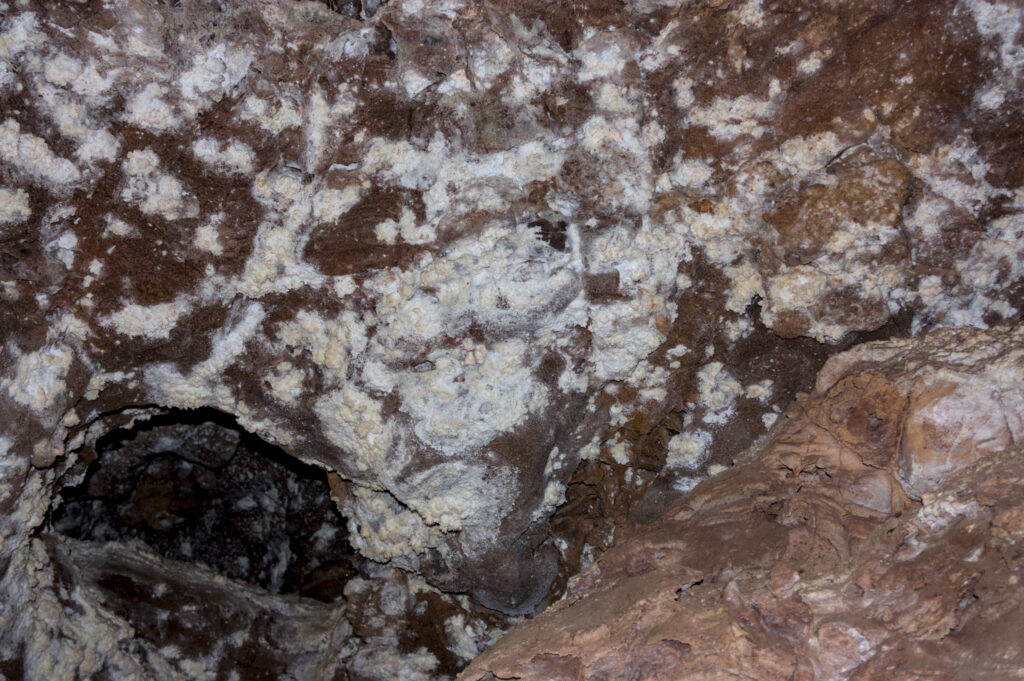
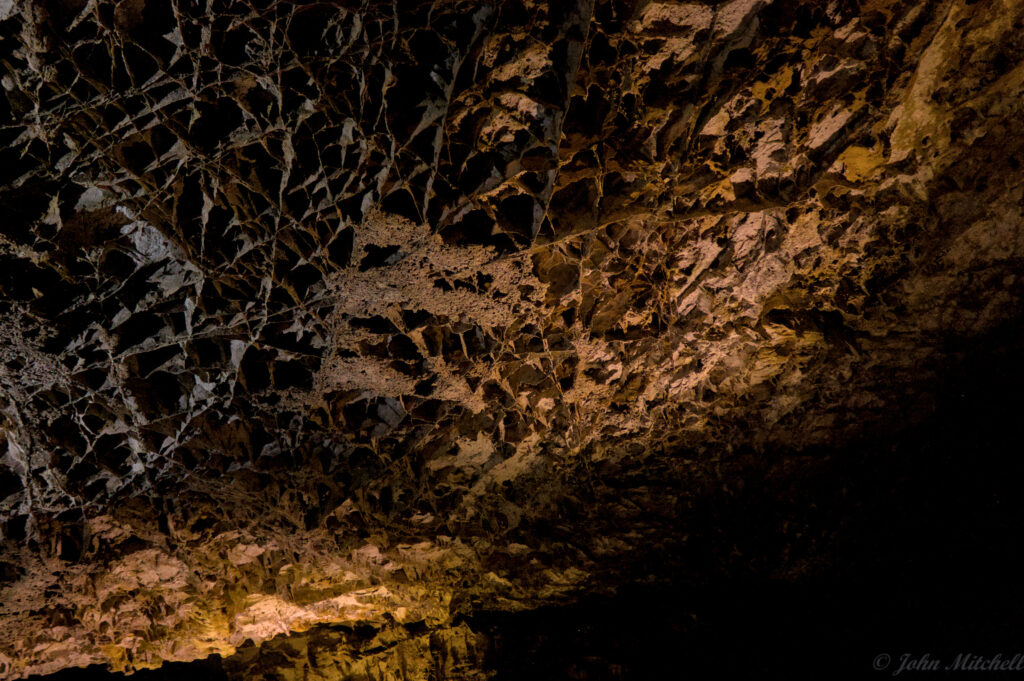
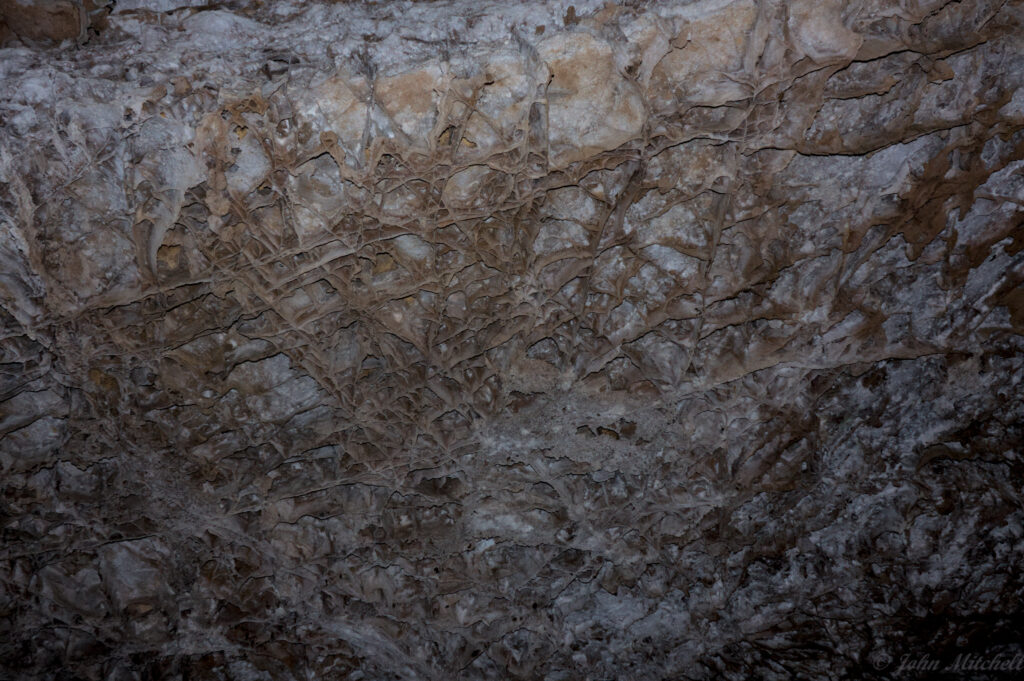
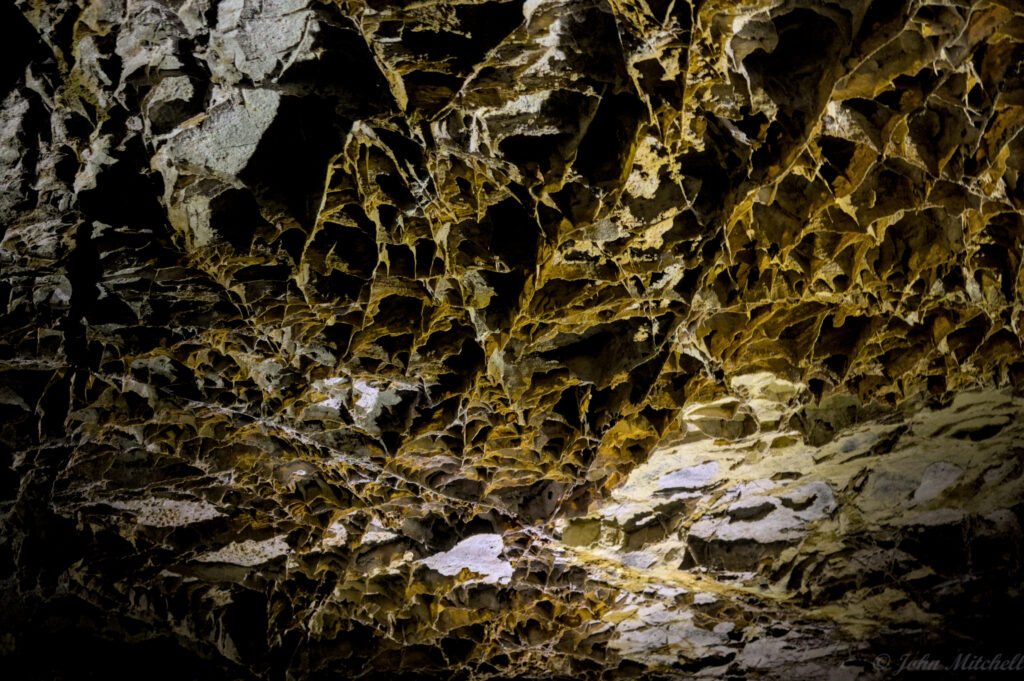
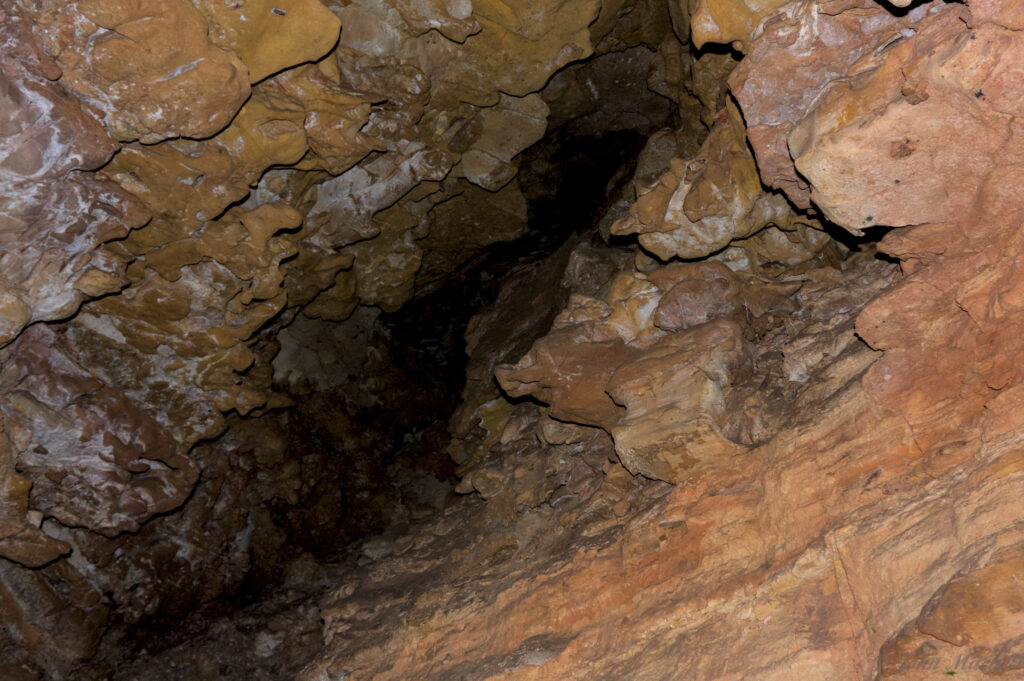
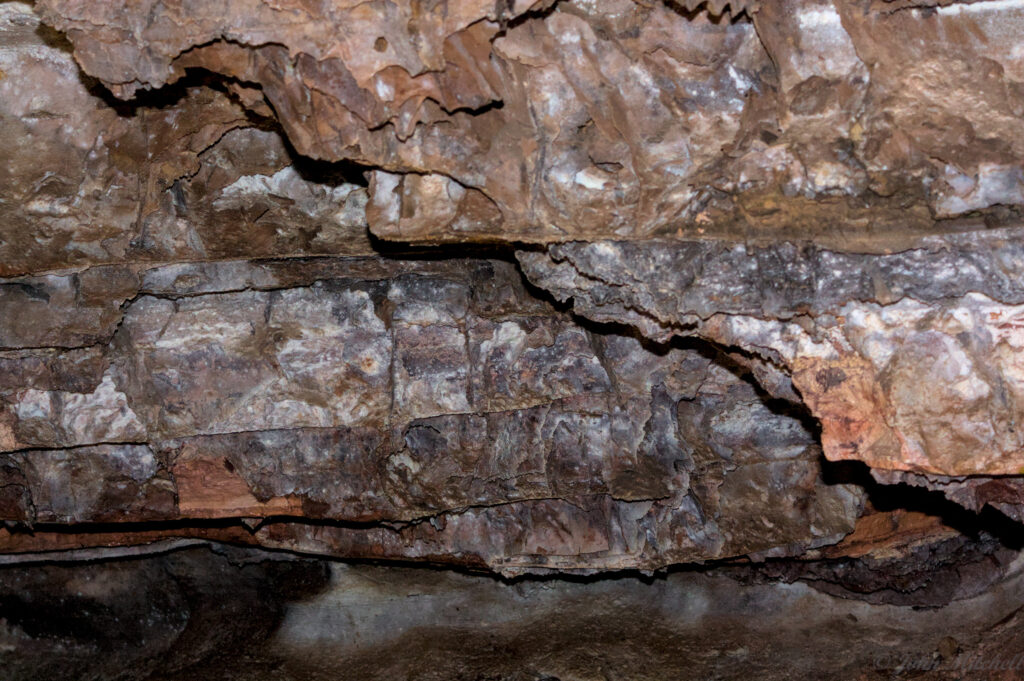
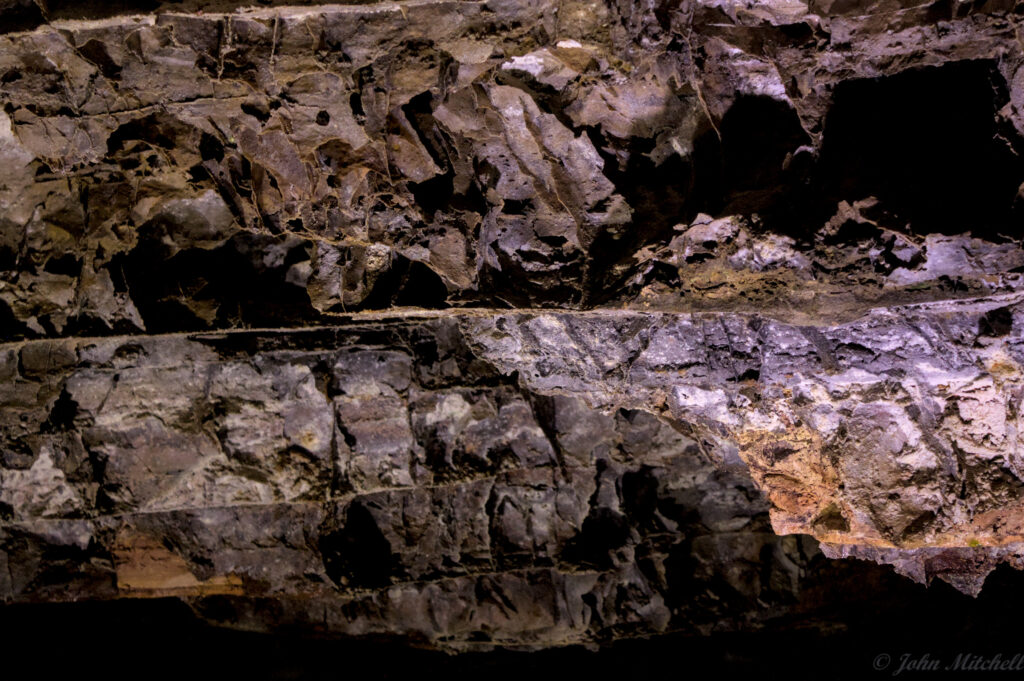
If you look carefully, you will see exploration markers. In the old days, they used candle soot. Later, they moved to grease pencils. More recently, they use yellow plastic tags.


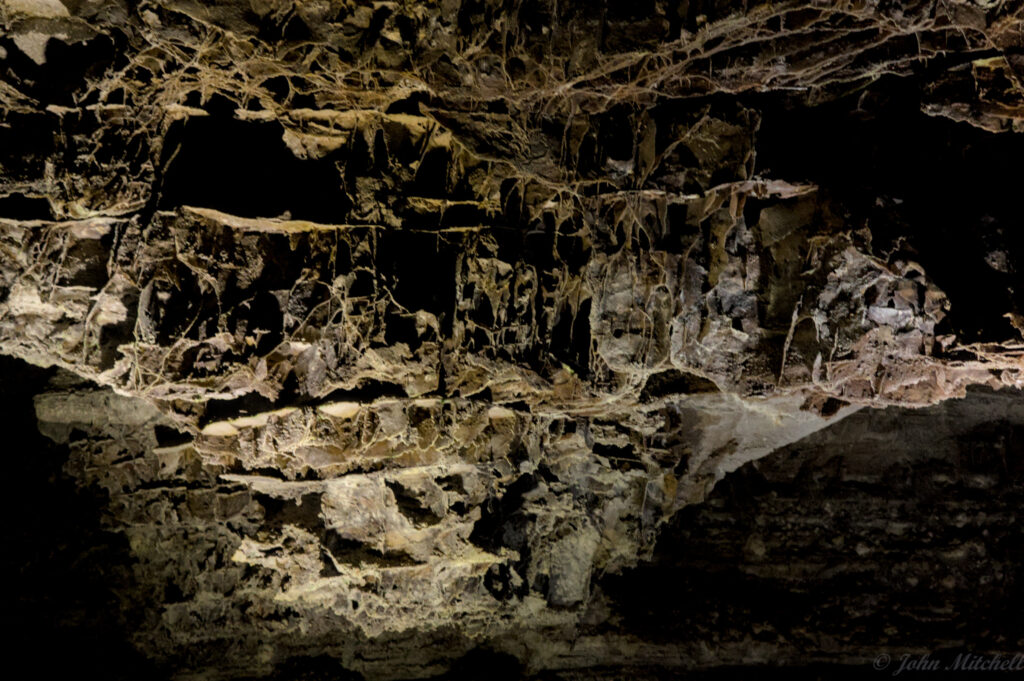
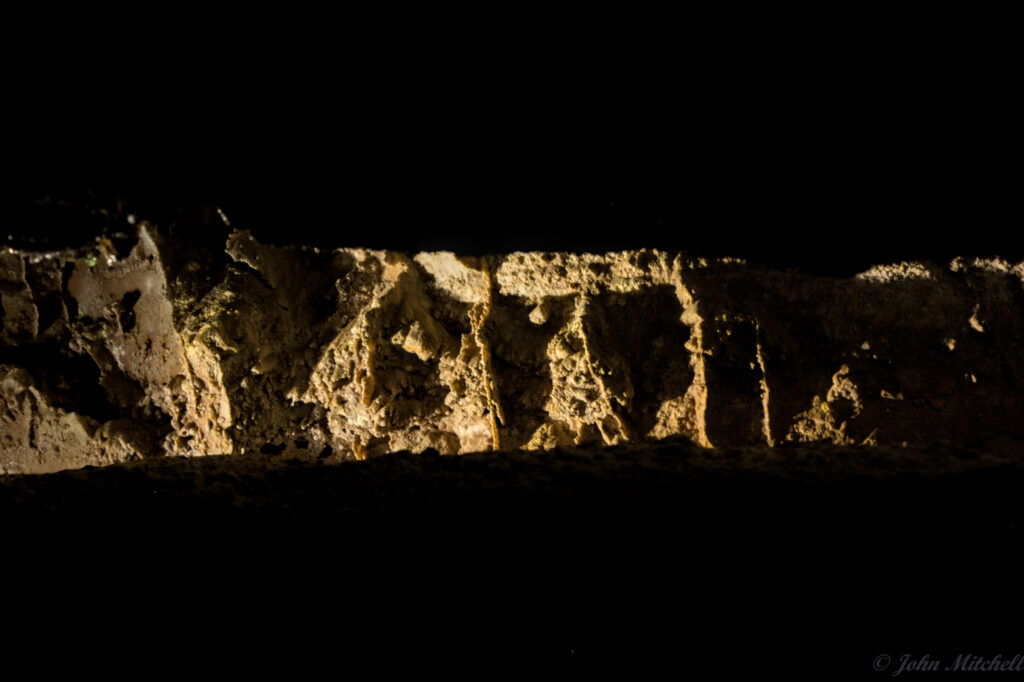
Sometimes, they look like something, like a stack of Crepes.
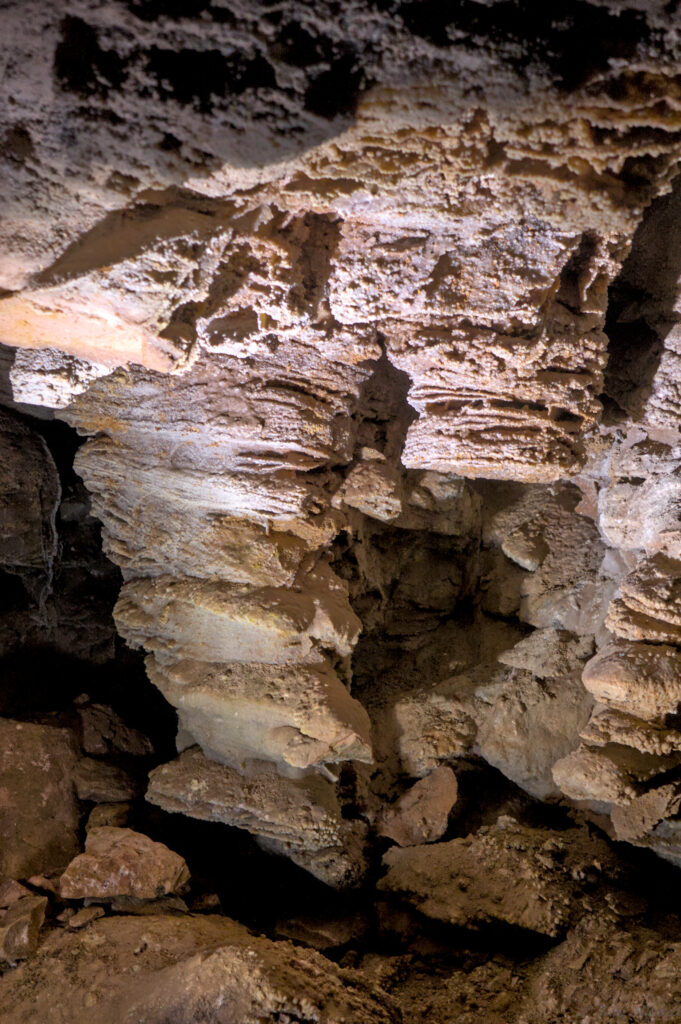
Or an alien head with sharp teeth. The one on the right used the flash, which completely ruins the alien effect.
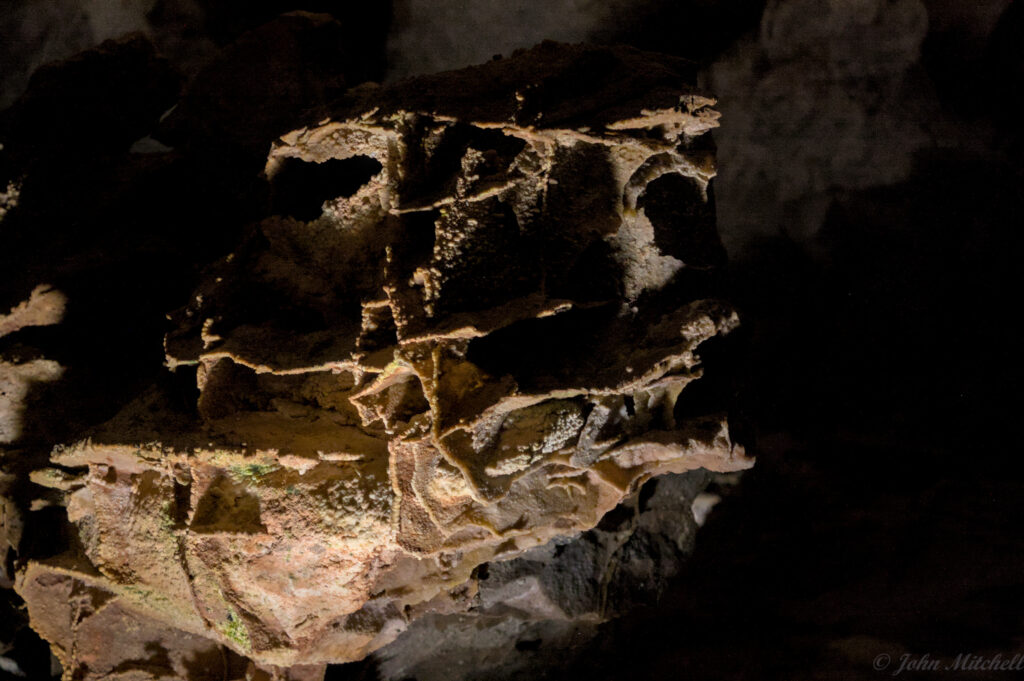
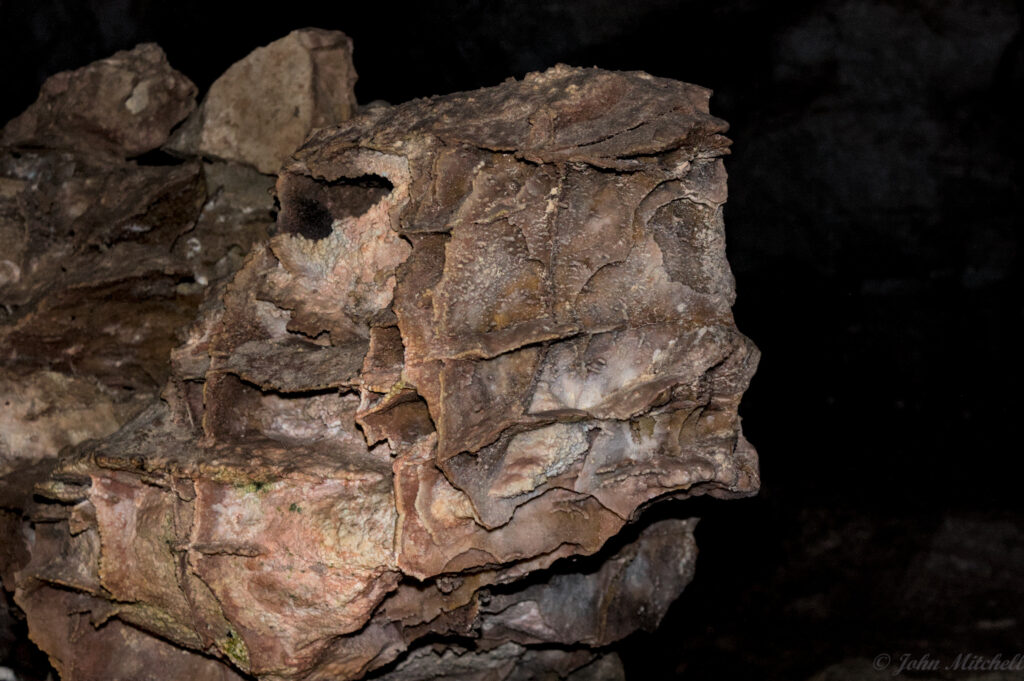
Inside the cave, the guide talked about the history of Wind Cave National Monument. It was originally bought to be a mine due to some of the crystals in the cave. Sadly for them, they were the wrong crystals. A family was hired to look for signs of gold in the cavern, but the son spent all his time exploring instead of looking for gold. When there was no gold, they started doing tours. In the end, the owners squabbled, went to court, and the government confiscated the land to make the first underground resource national monument.
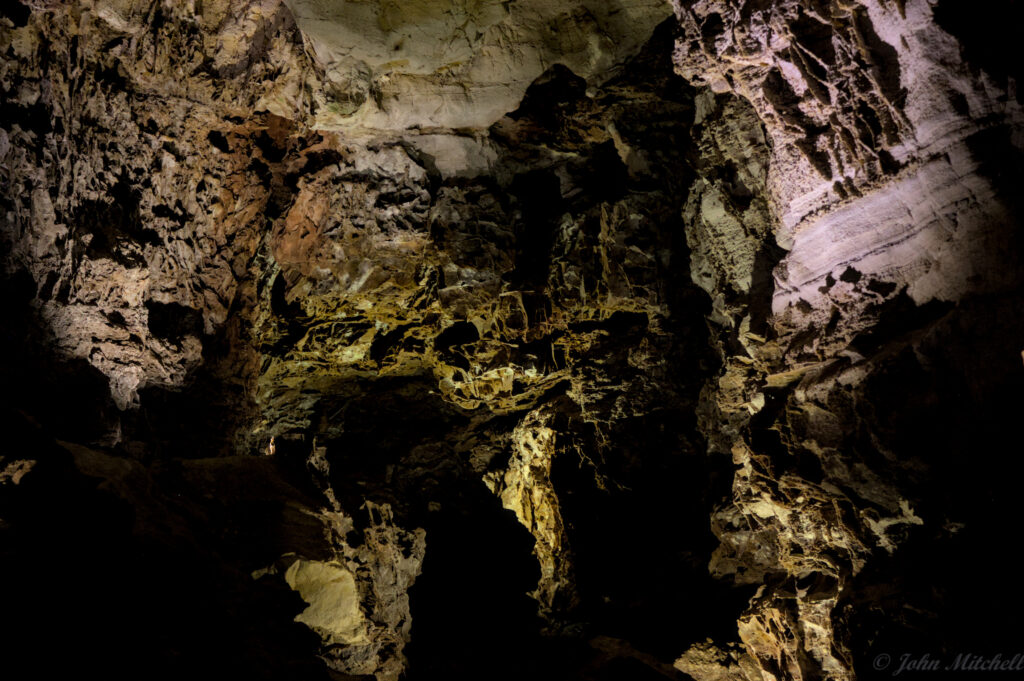
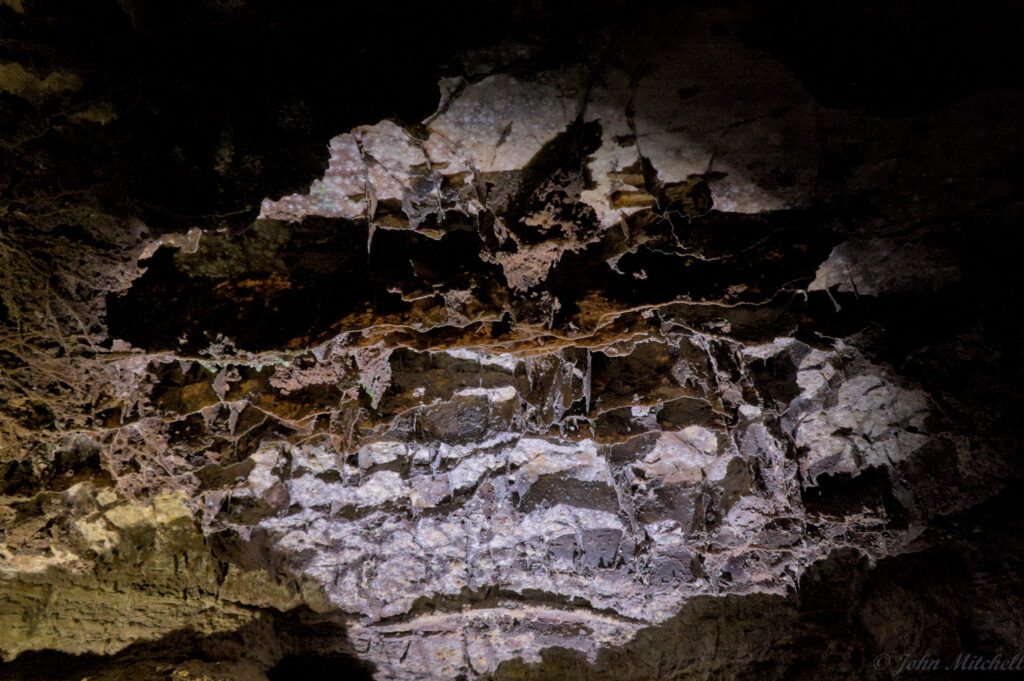
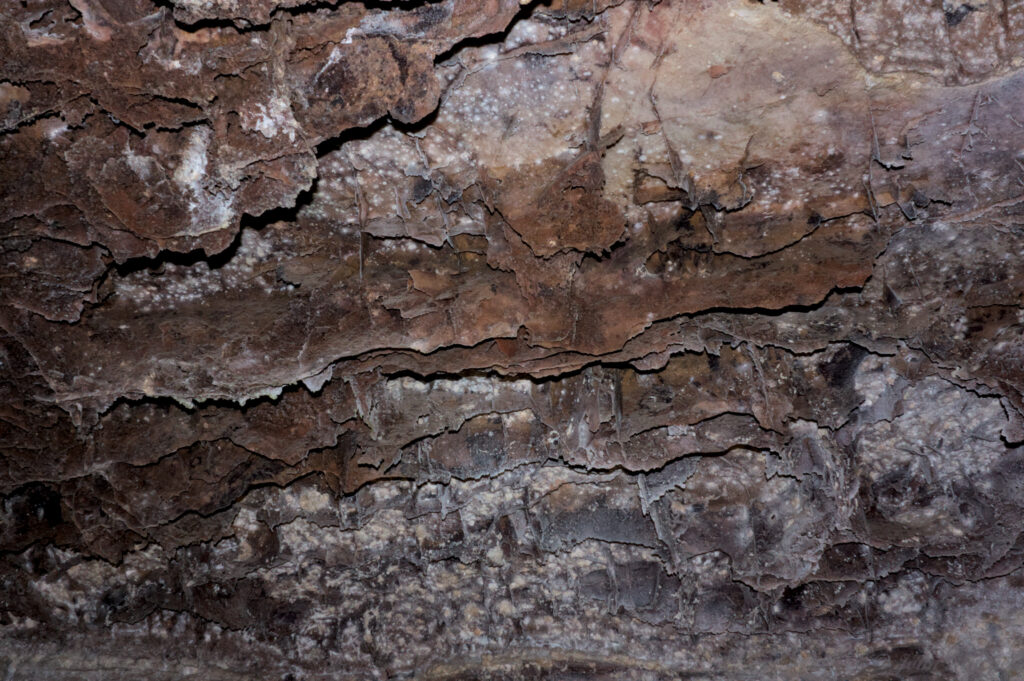
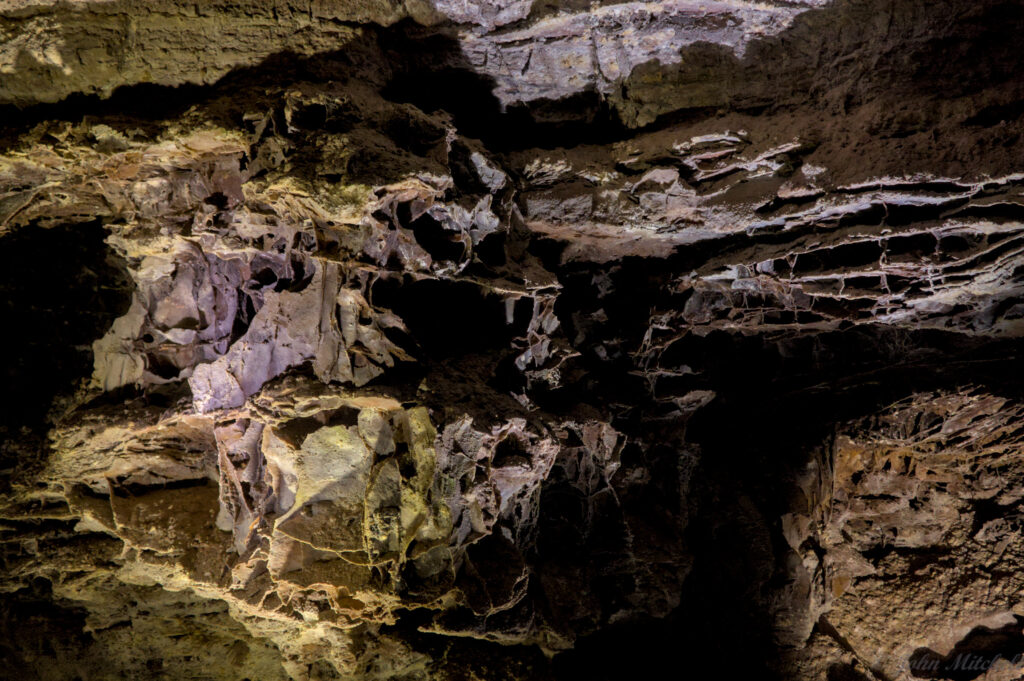



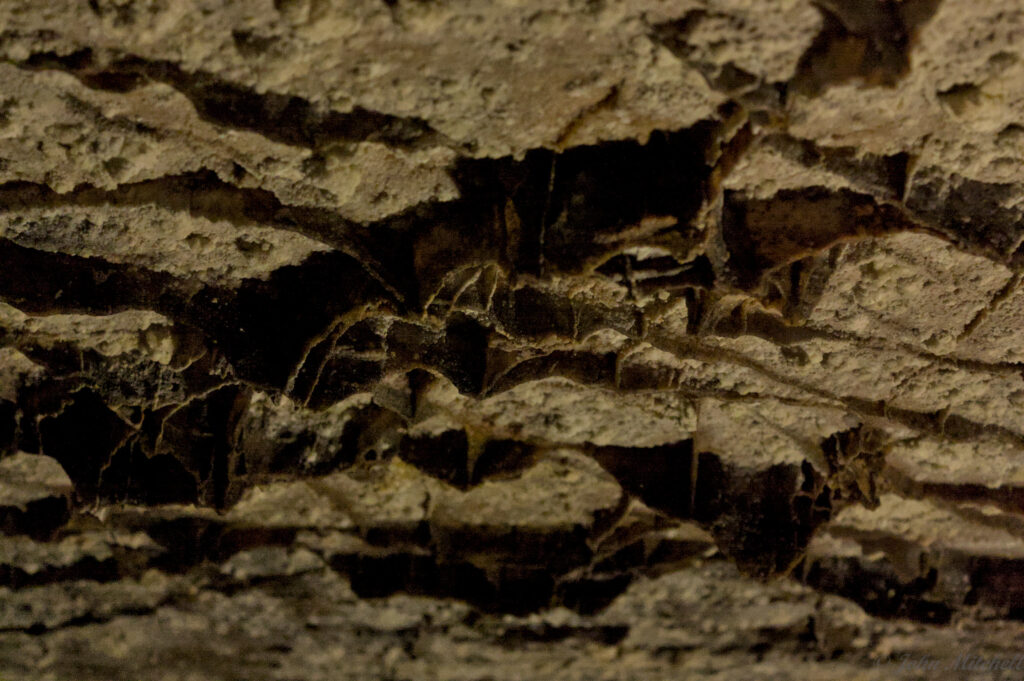
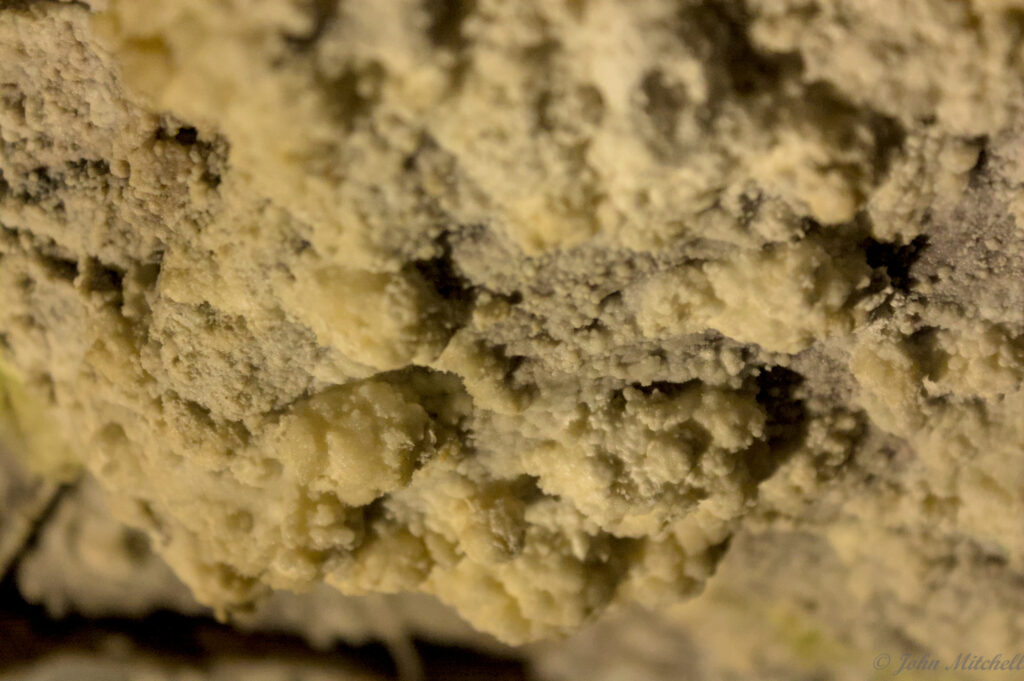
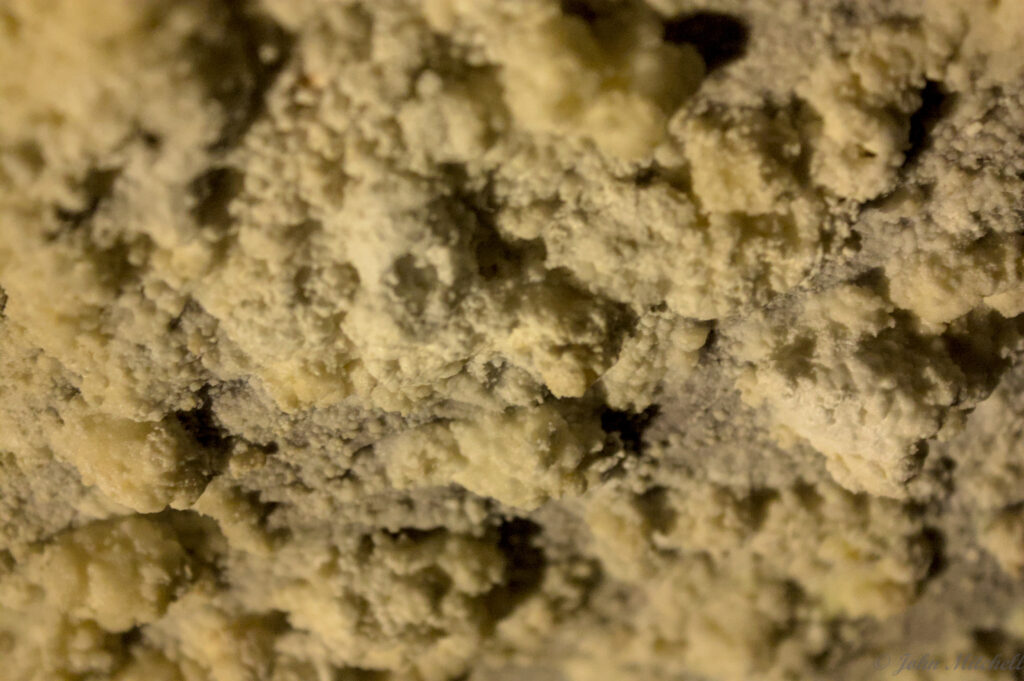
At the end of the first tour, we rode the elevator up. Similar to the waiting shelter, there was a bullseye of bird poop just outside the door. There was another nest in the rafters, but no one was visible.
We went back to the car and grabbed the lunch Kate packed. We ate outside at a picnic table, went to the store, and wandered the visitor center displays. The visitor center was split between the “World Above” displays and the “World Below” displays. Kate will include her cave pictures and the visitor center pictures in a separate post.
Waiting outside the elevator building, John checked on the nest again. This time, there were three little birds, all in a row. While we ignored the tour guide, we watched the parent stop in a few times to feed them. There was also a very small and very loud little wren in the tree near us.

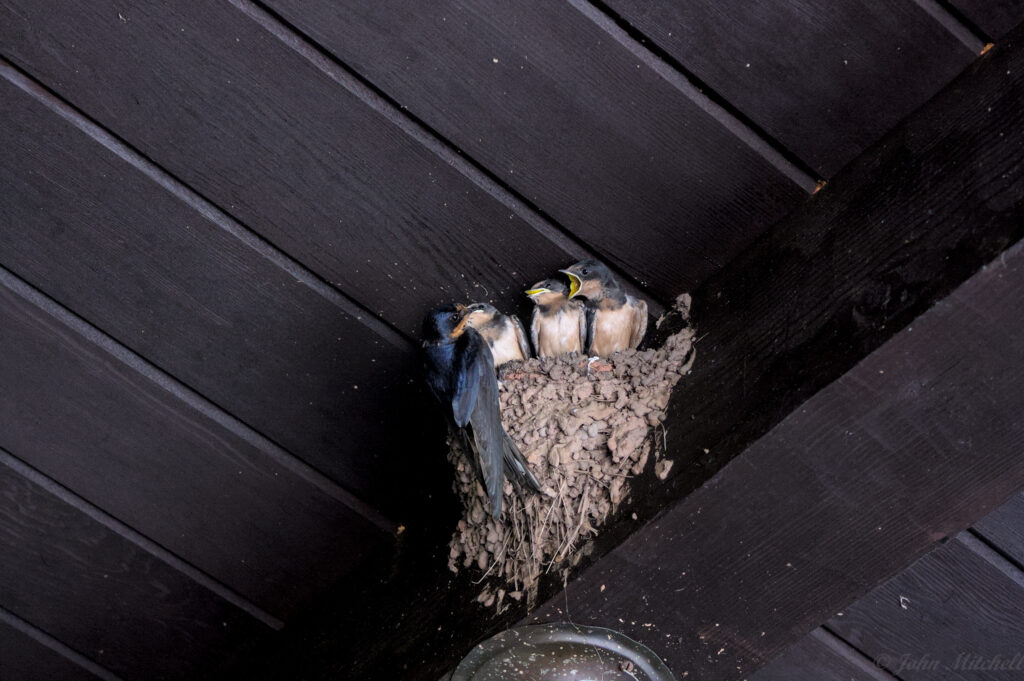
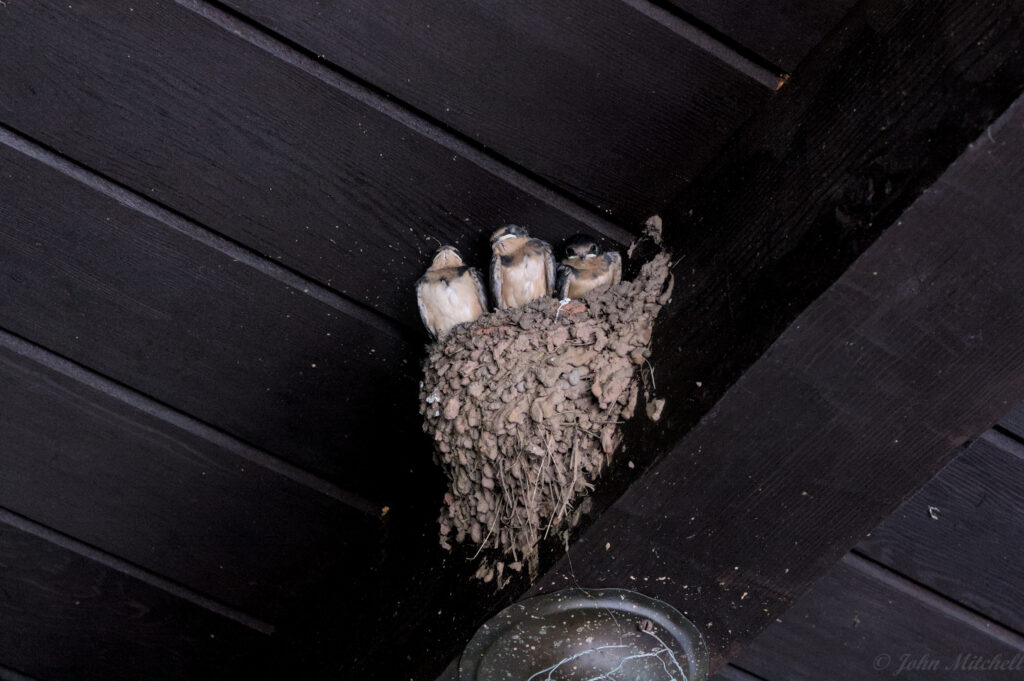
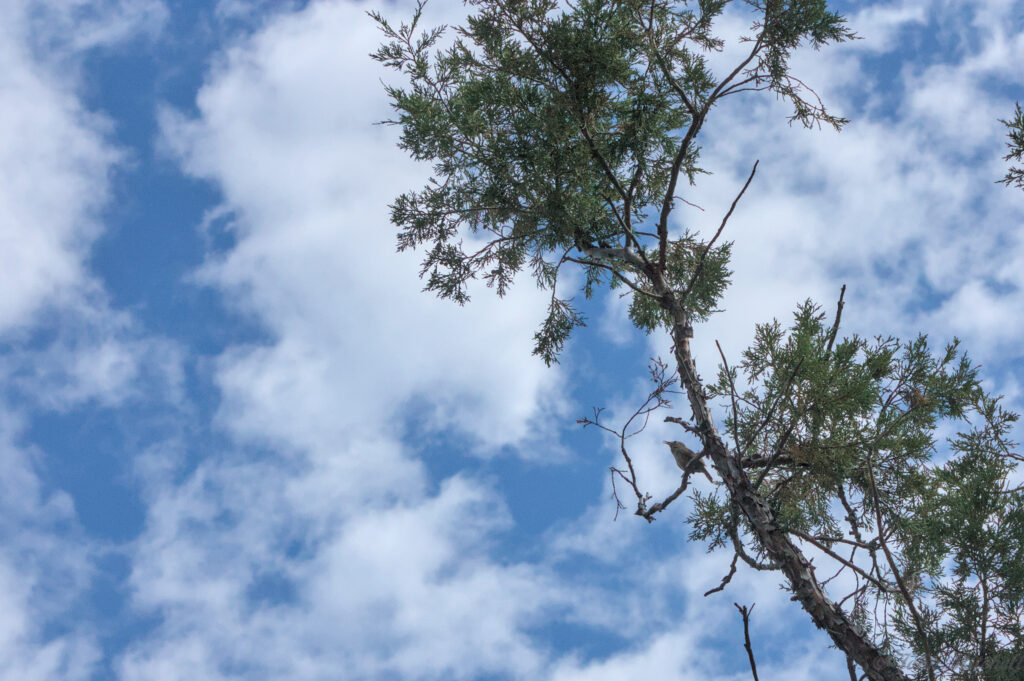
The second tour was called the Fairgrounds. It was a loop around some of the better formations with minimal overlap with the Natural Entrance tour. It had an abbreviated version of the same information presented in the first tour. There might have been a few more large rooms to see, but the formations were the same as the first tour. Unfortunately, this tour had a very loud and hyper young girl. Her mother had claustrophobia issues that forced her to exit early, and her father did not keep the two children from being loud and annoying.
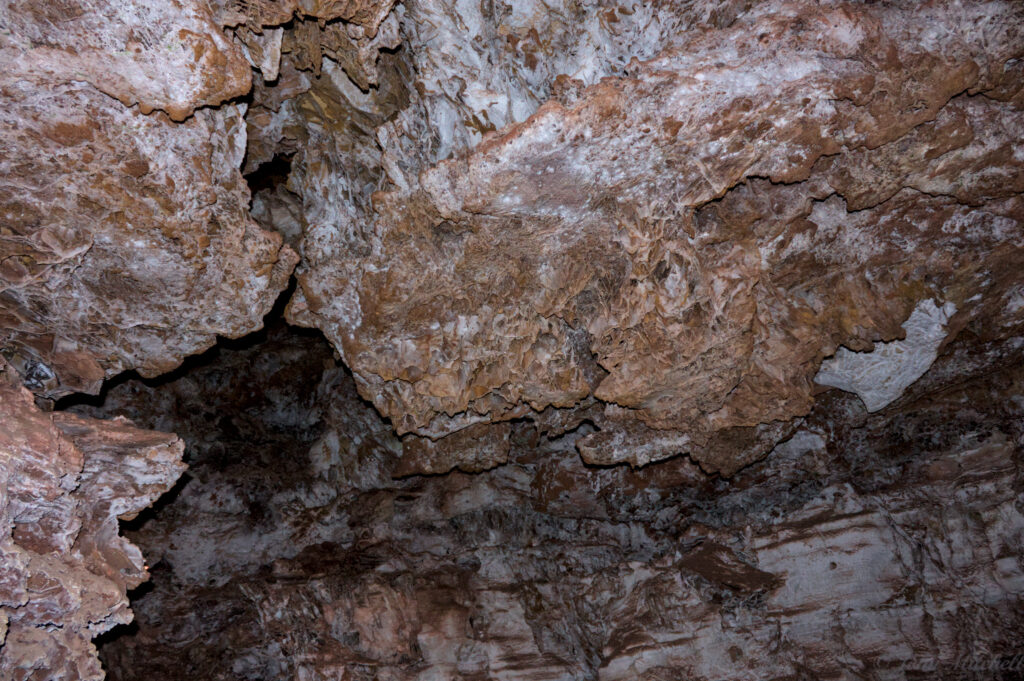
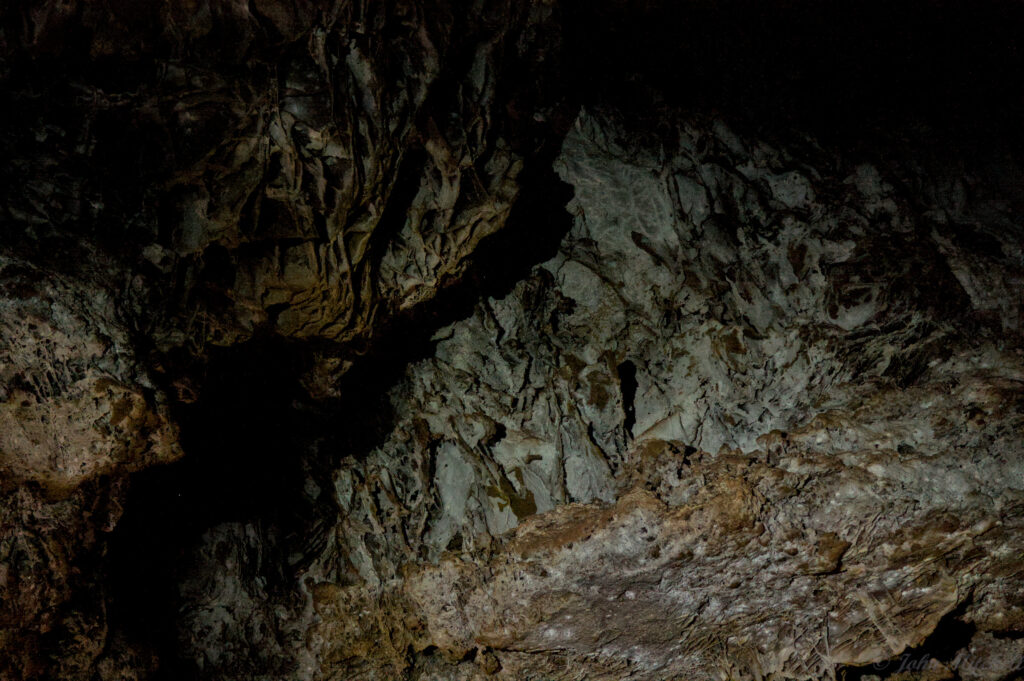

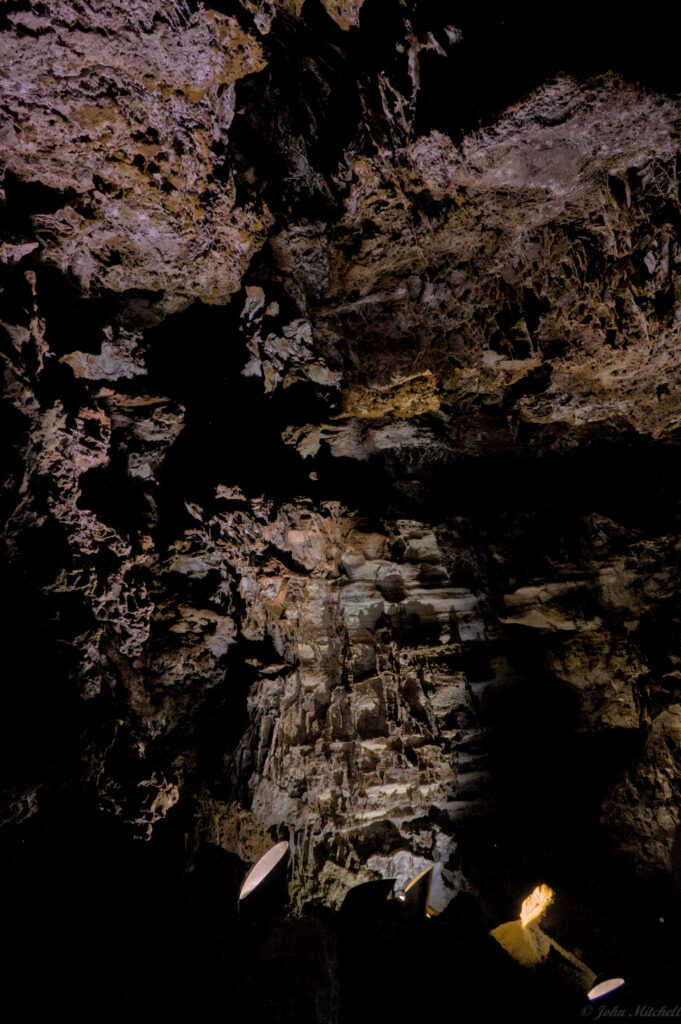

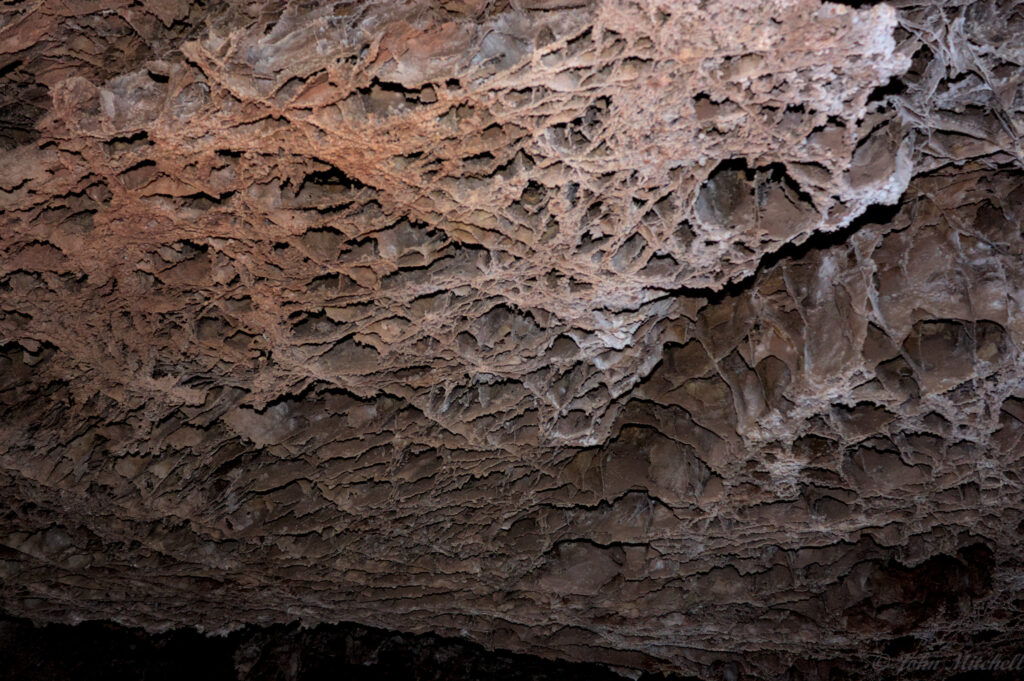

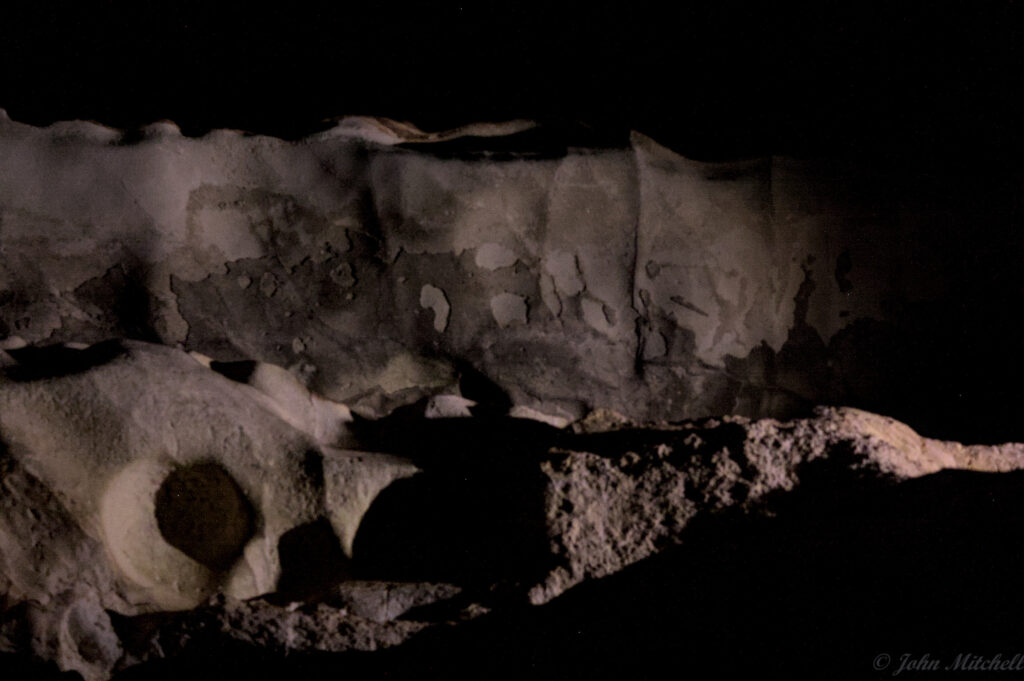

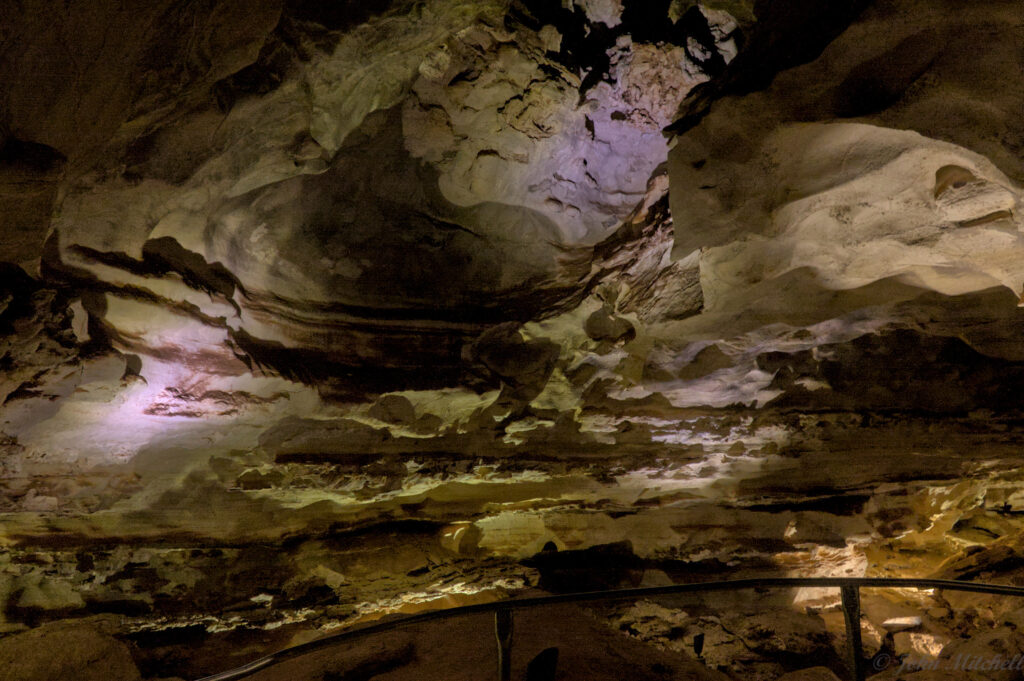
We arrived at a room with three rows of benches. This was where the guide talked about the history of the park. This is also where they did the sudden reveal of what might be a large patch of Cave Frostwork. It is not clear where Cave Popcorn ends and Cave Frostwork begins. In the dark photo, you can see the reflection from the crystals.


There were also places that looked like the eroded sides of sandstone canyons.
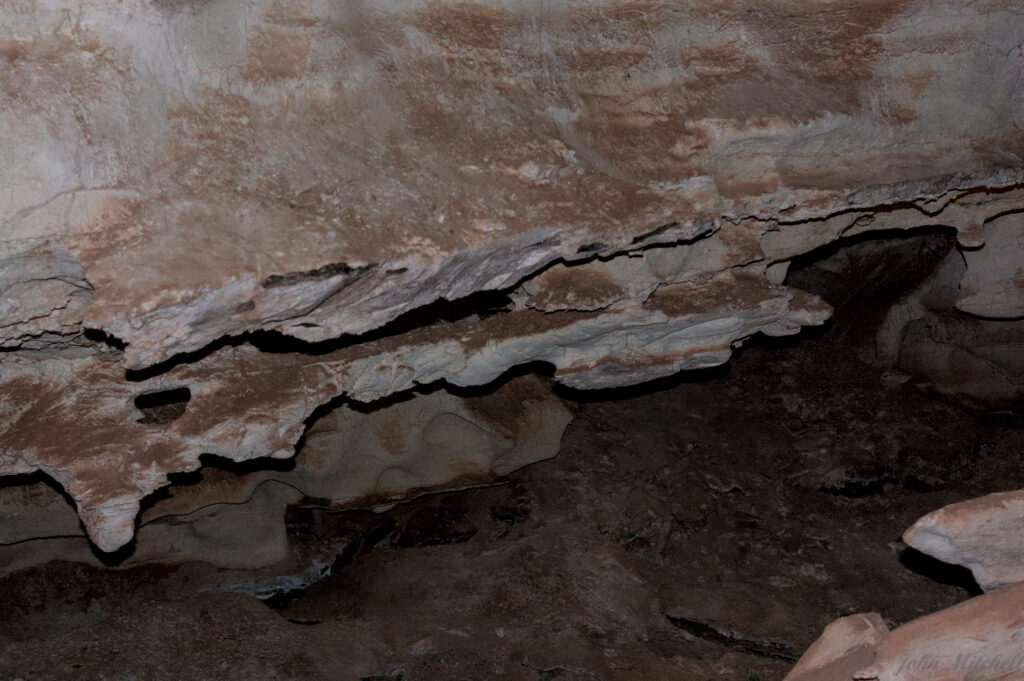

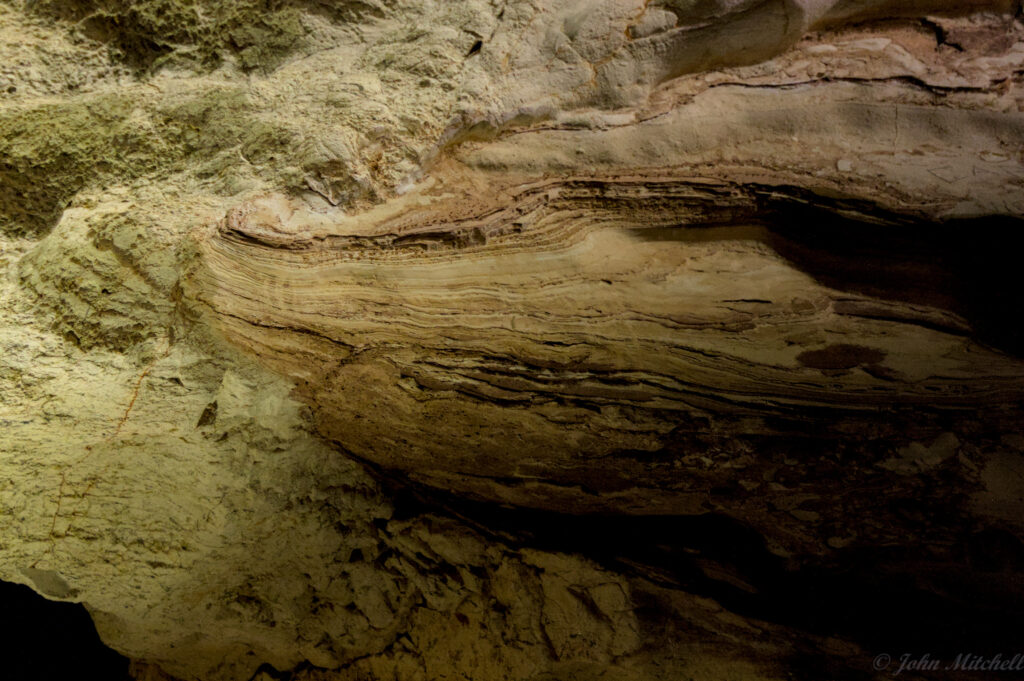

This formation is a case where the flash might have made a better picture.
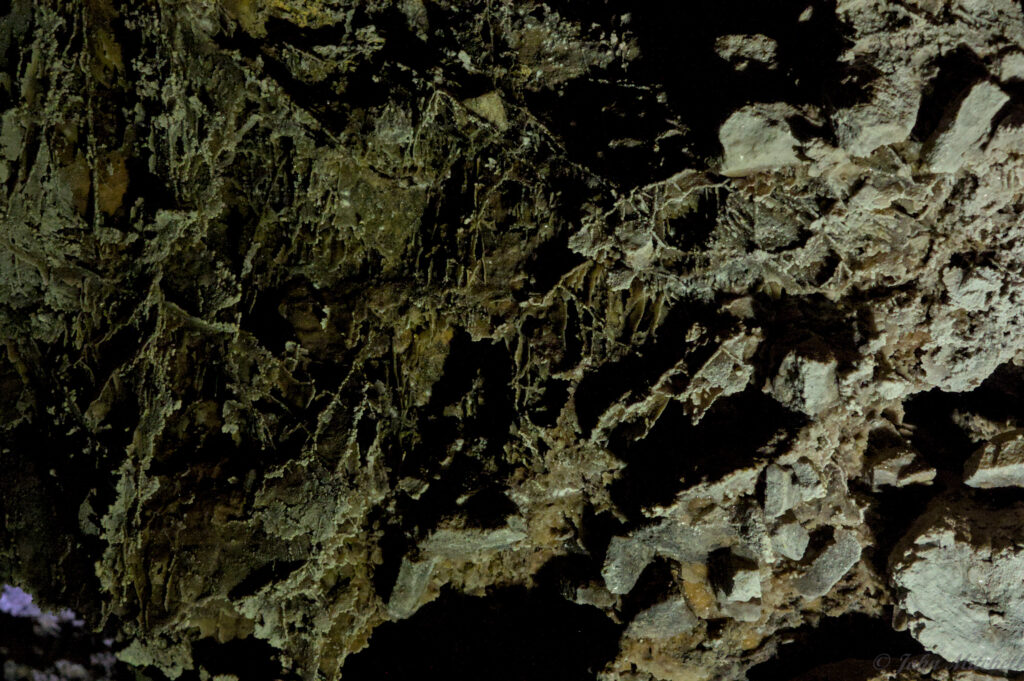

There is not enough variation in formations. After a while, the formations tend to blur together, and the photographs do not do the experience justice.

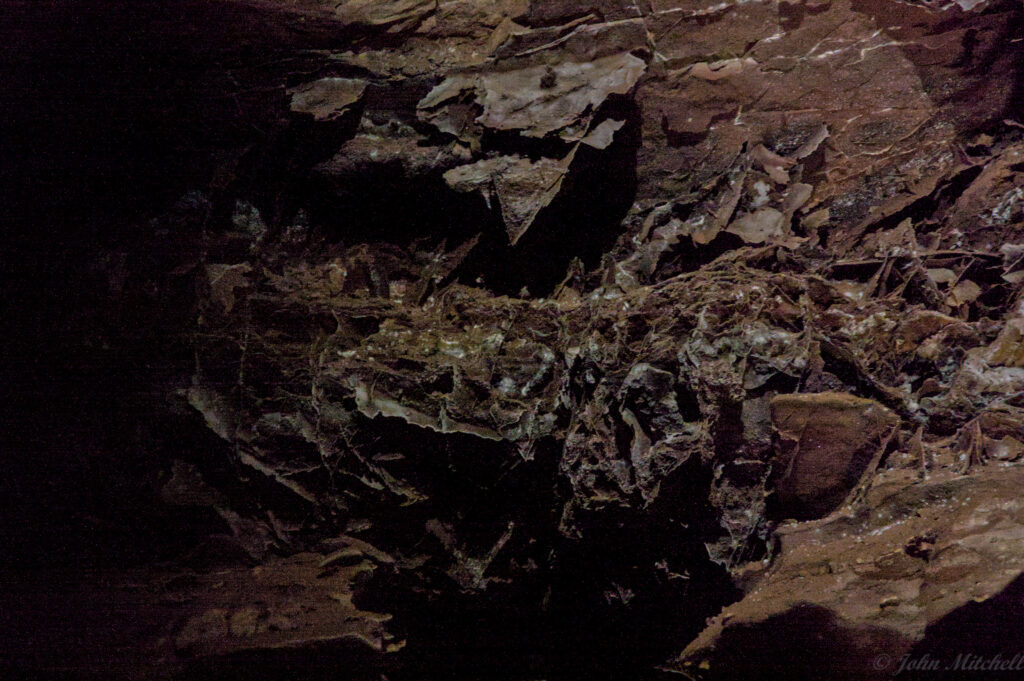
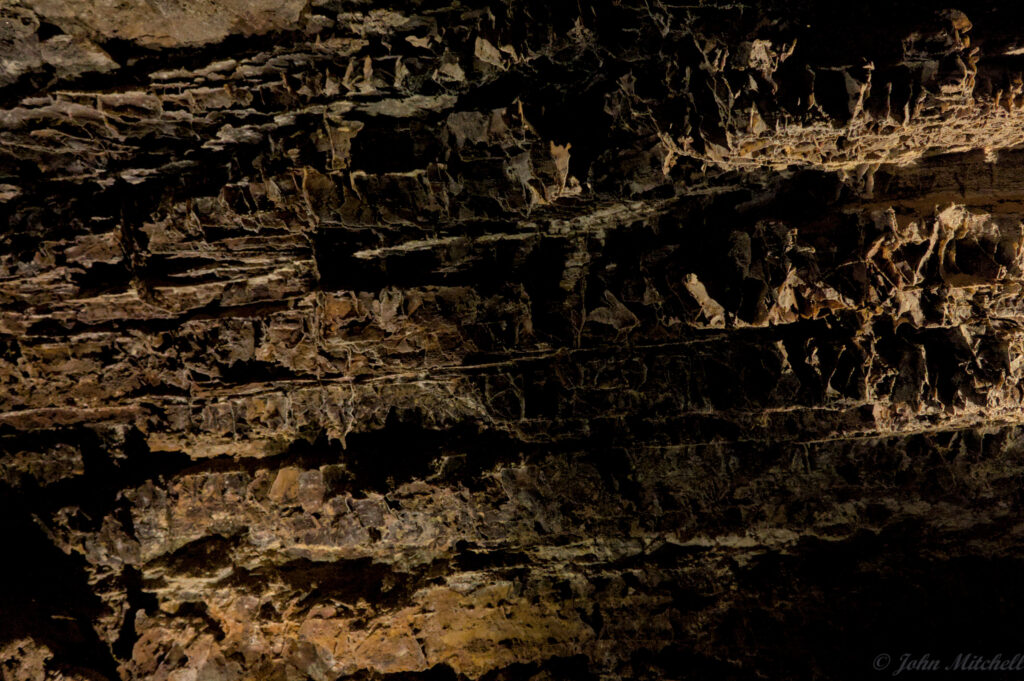

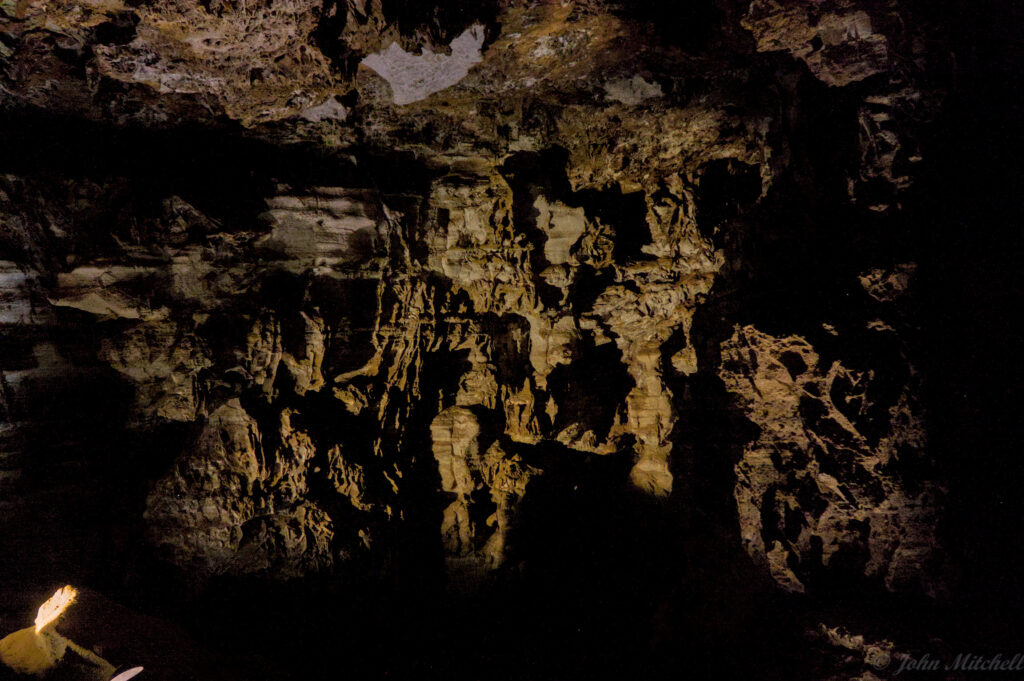

This was a giant hole leading up. It looked like it was at least several stories tall. The flash might have been visible to people touring above us.
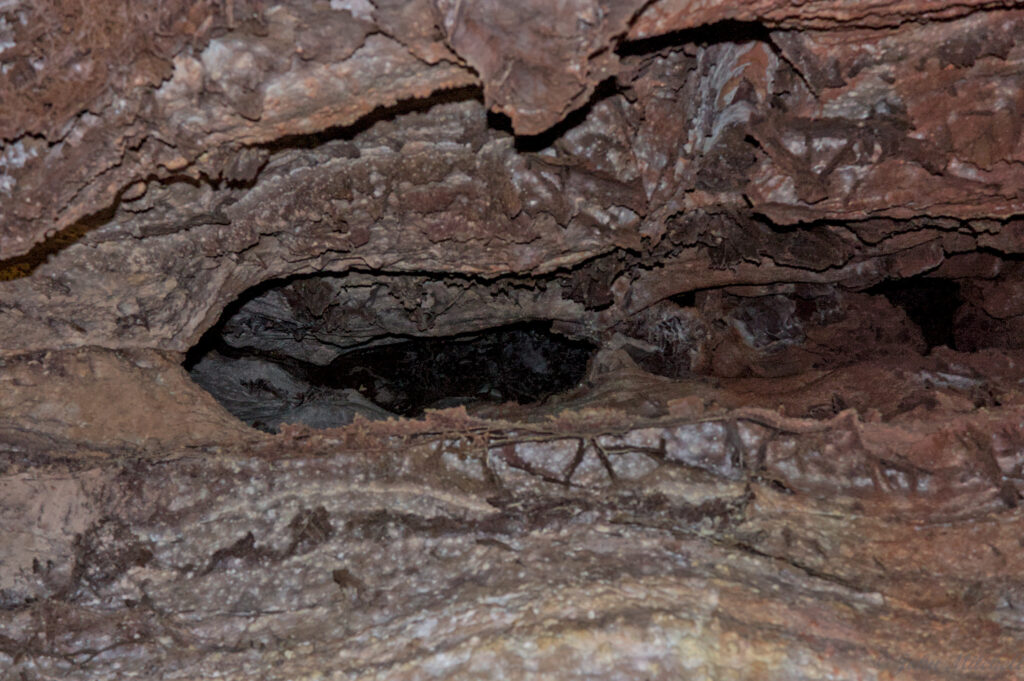
Both of the tours had several hundred (often uneven) steps to walk up and down along with uneven paved floors. Most people had to duck low rock formations; Kate took pride in the fact that she never had to duck. She now refers to her height as cave-sized. The long version of the tour experience is:
- The Natural Entrance and Fairground Tours are not enough different to warrant doing both. The Fairgrounds has better formations, but the Natural Entrance had more historical information. The fact that the Natural Entrance tour does not appear use the actual natural entrance is a bit disappointing.
- We did not do the other tours based on research:
- Accessibility Tour: very limited tour for mobility impaired tourists
- Garden of Eden Tour: limited tour for physically less capable tourists
- Lantern Tour: longer tour; reviews claimed you cannot see much
- Wind Caving Tour: very long tour; you crawl through rock crevices
- Wind Cave is mostly dry. It only has a few different types of formations, but it has an abundance of the uncommon Boxwork formation. The formations are not as diverse or majestic as a large wet cavern, like Luray Caverns in Virginia.
- There were only three to five detailed stops on the tour.
- The tour groups very very large, around 40 people.
- Your experience may vary greatly depending on whether:
- You have loud irritating children in your tour group or not.
- You get selected to be used as a human detour at intersections.
- You get selected to be the caboose.
The short version is that one of the $16 tours at Wind Cave is adequate, but your personal preferences and physical abilities might steer you to different tours. We are not thrilled that they enlist paying tourists to assist with the tour. If they are putting us to work for the NPS, we should at least get a discount on our tickets. They also need a no kids tour; we would pay extra for that tour.
